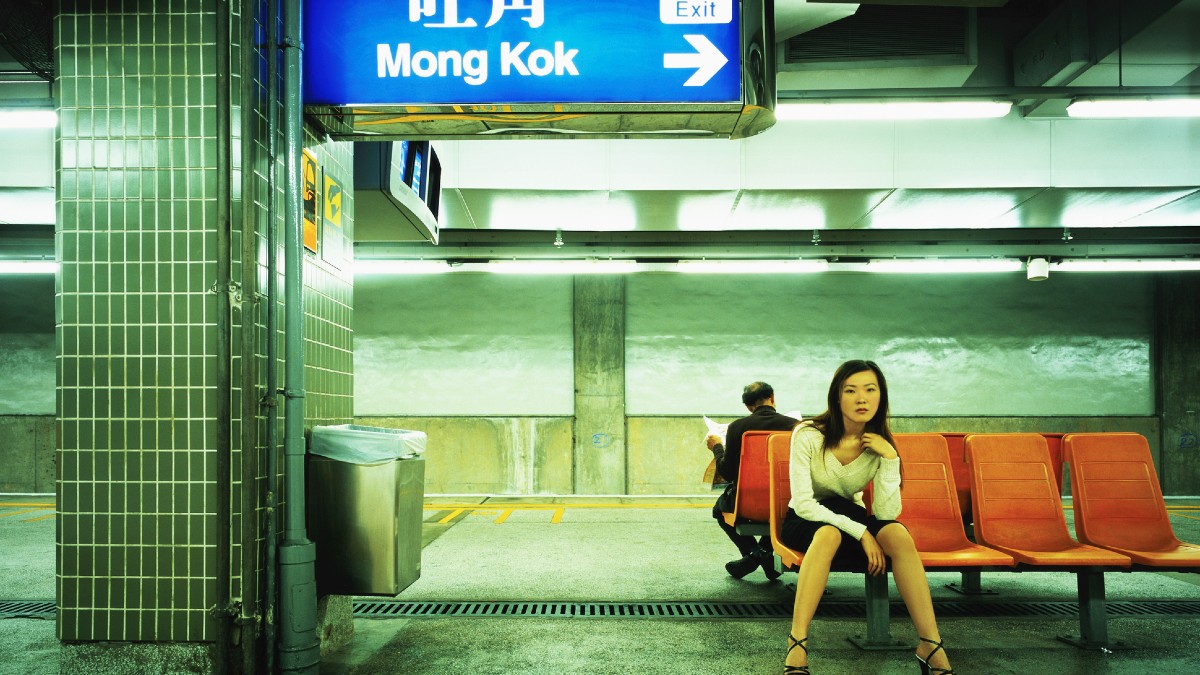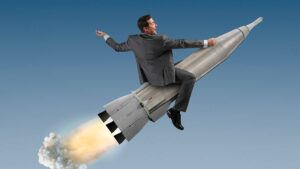We’re getting tired waiting for the stimmy China needs to look less Middle-of-the-road Kingdom

I miss Mong Kok. Via Getty
Thinking you’re in love and being in love are the same thing when your heart’s on the line. And that’s not even a lyric from a really good Bruce Springsteen song.
It is however a universal human foible which – on behalf of sleepy Xi Jinping (China’s laurel-arse-resting President) – I now apply to the state of the Chinese economy.
Sentiment matters in life, love, economics and politics.
The feeling right now is that things in China are surprisingly, unnervingly crap.
Sleepy ratings agency S&P Global made a big deal about trimming its forecast for Chinese economic growth this year, drawing further snowballing attention to what China was once like and what it’s like today.
Forecasts for China’s GDP growth this year have been all over the shop – ranging between 4.4% to 6.4%.
But the indestructible economy’s recovery from the pandemic is all Long-COVID, with possibly a little chronic fatigue syndrome and even mild depression.
And like any sleepyhead sickness, all one really needs is some adrenaline pumping stimulus. Stimmy. Crazy good stimmy direct into the central very nervous system.
S&P says Chinese GDP growth is likely to hit 5.2% this year, down from an earlier estimate of 5.5%, and yet both numbers would please the pants off whomever’s job it is to wake the president and tell him the crazy good news.
Standard and Poors are the first among the major global credit ratings agency equals to take a knife to China’s outlook this year, but they have slavishly followed the cue provided earlier in the month Goldman Sachs and a few of the other significant investment banks.
Chinese tech stocks are no longer a technicolour must-see. Shopping is dropping. Tourism is non-existent. Economic indicators, real and imagined are not setting anyone on fire.
Iron ore futures are wobbly as Chinese mills, instead of bracing for stimulus, kept cutting steel prices.
A very large chunk of our economy, not to mention our bourse and the largest companies on it, are looking tired pumping their new energy credentials. What they’d prefer to be doing is supplying another Chinese infrastructure binge.
The world’s No 2 economy came stutter-roaring back into life after President Xi Jinping was enthroned for his historic third term and had reassembled the chess board to his liking. That’s when China finally took the lid off three crazy years of nobody move, zero-COVID policies.
Unfortunately, the accumulated household savings came with accumulated angst. Spending was tepid, despite attempts to prove otherwise.
In May, the forlorn state of the property sector took another dive as investment fell further away, industrial production (and retail sales ) missed pretty achievable targets, and most disturbing for the Party People – China’s youth unemployment is dangerously, take-to-the-streets high, at well over 20%.
S&P said likely measures to bolster the economy could include “easing housing purchasing restrictions and mortgage down-payment requirements, expanding credit and infrastructure financing and, perhaps, fiscal support for consumption”.
IG Markets analyst Hebe Chen says the problems China is facing are more real than imagined.
“I don’t perceive Goldman Sachs’ projection as excessively pessimistic, considering the foreseeable risks ahead for the Chinese economy compared to the opportunities on the horizon,” Hebe told Stockhead this week.
“Undeniably, China’s anticipated economic stimulus measures should play a crucial role in the remaining of the year and potentially 2024.”
“However, it is important to recognise that, fundamentally, these measures are being considered primarily due to China’s underwhelming recovery journey thus far.”
Cracks started appearing after Christmas, a time of giving. But not in Beijing.
Despite China’s record-breaking exports of US$3.59 trillion and 7% export growth, the government fell short of its 5.5% GDP growth target for FY2022.
There’s some fundamental holes here, that Xi’s transition team have missed entirely or are just sitting on because they’ve got one hell of a secret plan tucked away for imminent use.
It’s hard to make it sound real, but the Chinese economy grew by 3% last year, according to the National Bureau of Statistics. Easily one of the worst performances in nearly half a century.
“All this raises two pressing questions: how much additional effort will be sufficient to revive the economy to the level projected earlier this year?” Hebe asks.
“And more importantly, can these measures effectively address fundamental issues within China’s economy, such as insufficient domestic demand and a struggling manufacturing industry due to the departure of overseas investments?”
Until these questions are answered, Hebe warns, fans of iron ore and the ASX miners that dig it might like to get on top of any runaway emotions.
“It’s prudent to avoid excessive optimism regarding China’s economic boost plan and the anticipated results it may bring.”
Related Topics
UNLOCK INSIGHTS
Discover the untold stories of emerging ASX stocks.
Daily news and expert analysis, it's free to subscribe.
By proceeding, you confirm you understand that we handle personal information in accordance with our Privacy Policy.








